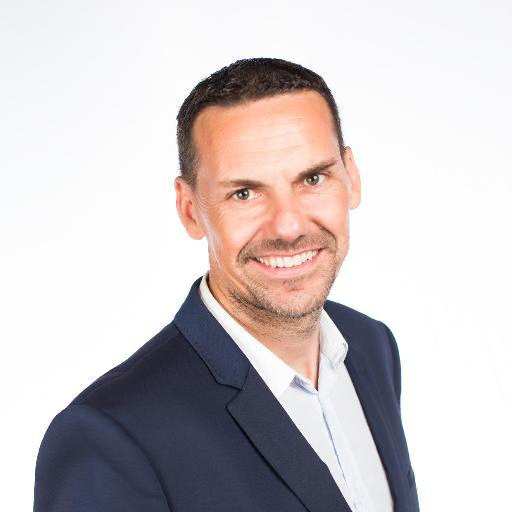Among these formal exchanges, the individual (or annual) appraisal interview and the professional appraisal interview are often confused. It has even happened that certain elements of one are integrated into the other. A false good idea that has certainly saved time, but has also created confusion.
What are the differences between individual and professional interviews?
There are 4 differences: firstly, they don’t meet the same legal obligations, secondly, their content and objectives differ, and thirdly, we recommend different assessment tools and grids. These complementary interviews are essential for fostering employee commitment and developing performance within the company.
To help you better understand and use them, here are 4 differences between the annual appraisal interview and the professional appraisal interview.
1. Legislative difference: legal obligation vs. right offered
While the annual interview is not mandatory but rather a right offered to the employer, the professional interview is a legal obligation, as specified in Article L. 6315-1 of the French Labor Code, and has been since March 7, 2014.
The employer must inform the employee of this at the interview. The interview must take place at least every 2 years and during working hours.
"If the employee has been given sufficient notice, he or she may not refuse to take part in the interview, on pain of dismissal."
A professional interview must also take place systematically after :
- maternity leave ;
- parental leave ;
- sabbatical leave;
- sick leave of more than 6 months.
For any company with more than 50 employees, any breach of this obligation will result in a sanction by the labor inspectorate.
Thus, an employee who has not attended a professional interview for 6 years can demand that his employer top up his CPF (Personal Training Account) by €3,000. Although companies with fewer than 50 employees are not obliged to notify and carry out this interview with their employees, its absence may constitute discrimination (and therefore misconduct) on the part of the judge in proceedings before the industrial tribunal (Conseil de prud'hommes).
Please note:
The annual interview may be compulsory for the employee if the company's collective bargaining agreement or branch agreement has so decided.
2. Content: operational results vs. professional expectations
While both the professional interview and the annual appraisal provide feedback, the principle is different.
The professional interview focuses on skills
It is based on an exchange centered on the management of the employee’s skills. It is therefore directly linked to employability.
It is based on his professional aspirations and is a privileged moment to :
- Communicate identified training needs;
- Express your wishes for professional development and/or mobility in the short, medium or long term;
- Take stock of training courses taken during the past period.
Three key points related to the development of skills will be addressed:
- Using your personal training account(CPF);
- Validation of acquired experience(VAE) ;
- Professional development support(ADP).
The professional interview is therefore an excellent opportunity to align the employee's desires with the company's real needs.
The individual interview measures operational results
As a complement to the first form of exchange, which determines the necessary skills, the EAD aims to assess the employee’s ability to apply his or her skills, to bring value to his or her position and to the company. Ideally, this discussion is fuelled by continuous feedback, the data from which is recorded in the HR software.
It is therefore part of a performance-measurement approach, and provides an ideal opportunity for discussion with the manager to address :
- Motivating or, on the contrary, difficult projects
- Successes and difficulties
- Areas for improvement (skills ).
The topics addressed during the interview are therefore varied, ranging from an analysis of the employee ‘s well-being to an assessment of the past year, as well as skills monitoring, training and future prospects (salary increase, career development).
The annual performance review is an opportunity to set new objectives. It enables us to prepare for the future in a concrete way in the short and medium term. It can take place once a year, or in the form of a semi-annual meeting.
It's also an opportunity :
- Take the pulse of employee engagement and motivation at work;
- Build trust and foster recognition at work;
- Resolve any unspoken conflicts.
Neobrain supports HR professionals in teaching and facilitating exchanges at the desired pace, in a constructive perspective: discover how our“Performance and Commitment” Solution fits in with your HR philosophy.
3. The goal: long-term vs. short-term vision
Once again, the two exercises differ.
The aim of the professional interview is to project a long-term vision based on the management of the employee’s career and its evolution.
We’ll be looking at all his skills, both skills technical and skills behavioral. Even those that are not part of the job.
Why take a skills inventory?
This skills review is designed to diagnose any training needs and outline possible avenues of progress.
This exercise is designed to enrich the professional project approach, i.e. the strategy to be adopted to achieve one's professional objective. It must therefore be consistent with :
- The company’s needs: which of the functions identified at Jobs & Skills Management does it need to support its growth or innovate?
- The employee’s ambitions : what position do they see themselves in? Do they want to take on more responsibility?
- Developments in the business sector or function : what emerging skills areas does the market require?
Based on the information gathered during these discussions, the company can then draw up an appropriate development plan.
In a nutshell: have figures been met or exceeded? Are the employee's skills professional skills satisfactory for the position held?
Based on the results, the manager can propose an action plan to the employee, with new objectives and indicators to be achieved.
Please note:
Only professional skills will be discussed, not private life(article L1222-2 of the French Labor Code). However, this is a discussion that must take place in good faith and constructively. Everyone must participate by taking responsibility for moving the discussion in the right direction.
4. Practice: professional interview grid vs. appraisal grid
The preparation and implementation of the two interviews differ in terms of their content and the frameworks used.
Professional interview grid :
Before the exchange:
The employee must be informed of the agreed date and details of the interview process, using a professional interview grid. The N+1 (manager or HR) and the employee must prepare for this exchange so that it runs more smoothly and efficiently.
The manager can, for example, prepare the employee's job description, CV and any previous reports. Preparing questions from both sides can also be fruitful in structuring the exchange.
During the exchange :
It can last up to 2 hours, depending on the frequency of the meeting, and will cover pre-prepared topics such as development wishes or planned training courses.
After the exchange :
The essential elements (date, position, summary, training actions, etc.) are recorded in a report.
For annual maintenance :
Before the exchange :
It is also compulsory to notify the employee of the date of the meeting and to send him or her an evaluation grid beforehand, which will serve as a guideline during the discussions. The manager and the employee can then compare their versions, which will serve as a basis for discussion.
During the exchange :
It lasts around 1 hour, but this can vary depending on the exchanges. The manager should open the discussion with performance-oriented questions linked to the employee's objectives, missions and skills . These questions are free, but reflect the company's objectives, culture and values.
After the exchange :
As with the professional interview, a report should summarize the discussions. It is at this point that proposals for promotion or salary increases also come into play.
Conclusion
Both professional and personal interviews are essential for :
- Foster employee commitment;
- Evaluate their motivation and productivity;
- Resolve potential conflicts and contribute to a pleasant working environment
- Set new goals;
- Propose a training plan.
Although the topics covered by the two types of interview are different, they are complementary and have a number of points in common:
- They require a lot of work to collect and compile data, which can be time-consuming: access to various Excel files and extensive validations.
- Their infrequent recurrence (especially for the annual appraisal) can be frustrating for both employee and manager.
This posts 2 questions
- How can we promote simpler, faster access to data?
- How can managers and employees improve the responsiveness and fluidity of exchanges in the age of hybrid work and a more uncertain market?
The answers lie, in part, in the use of a software solution
By anchoring new habits promoted by HR teams, an intuitive platform that unifies data will promote :
- Consistency and closeness of discussions thanks to continuous feedback on the objectives set at the beginning of the year;
- Time savings for managers and employees;
- Improved quality of exchanges and performance management.








